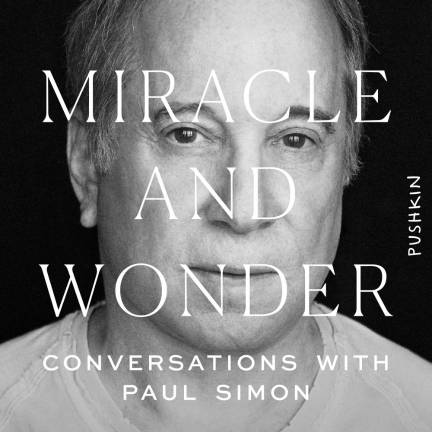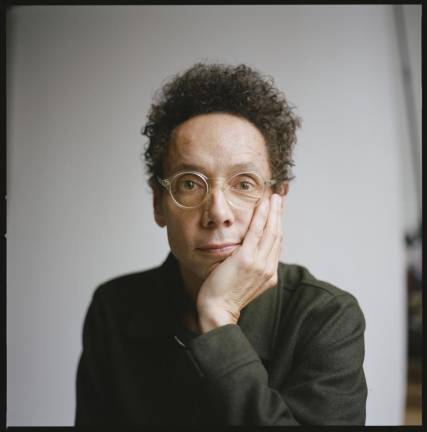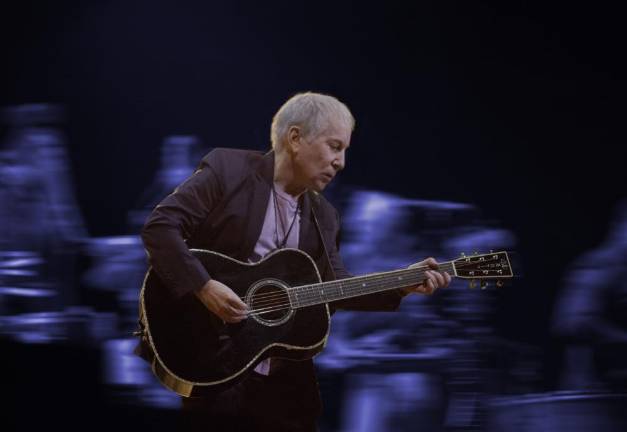On November 16 the podcast platform Audible releases “Miracle and Wonder,” a new audiobook from the “big idea” writer Malcolm Gladwell, (“The Tipping Point”), comprised of over thirty hours of interviews with singer/songwriter Paul Simon, along with fellow writer Bruce Headlam.
Simon, who turned 80 last month, has a career of hits stretching over six decades with songs that have become a part of American’s image of itself. Perhaps nowhere is that sense of self-reflection stronger than on the Upper West Side, which Simon has called home throughout his adult life.
Gladwell, himself a longtime resident of the West Village, explained to the West Side Spirit via email what makes Paul Simon one of us.
How might you describe Paul Simon as a consummate New Yorker, or even a consummate Upper West Sider?
He’s the perfect Upper West Sider! He’s a third generation Jewish immigrant whose favorite sports team is the Yankees and who used to live in the Dakota. (And then, if memory serves, across the street from the Dakota.) He wrote one of the all-time greatest songs about the most quintessential New York City experiences - which is moving to New York. I’m talking about “America,” of course:
“Kathy,” I said as we boarded a Greyhound in Pittsburgh
“Michigan seems like a dream to me now”
It took me four days to hitchhike from Saginaw
I’ve gone to look for America
Not to mention “American Tune,” about the immigrant experience:
And I dreamed I was flying
And high up above my eyes could clearly see
The Statue of Liberty
Sailing away to sea
And I dreamed I was flying
As part of “Miracle and Wonder,” we interviewed Sting, who described how on his first trip to America ever “American Tune” was the theme song of his band’s cross country trip. Where did they start? New York of course!
And I nearly forgot “The Boxer,” which refers to the “whores on Seventh Avenue,” which is something only a long-time New Yorker would remember, since there haven’t been whores on Seventh avenue for a very long time.
New Yorkers feel a profound sense of ownership of Simon, possessiveness and pride. Why is that? Is that feeling reciprocated?
Very very few artists ever embody the city they grew up in. The Beatles are from Liverpool. But they aren’t Liverpool. They belonged -like so many other great artists - to the community of musical greats. Paul Simon is so self-effacing and un-rock-star-like that I feel like New Yorkers can easily claim him as their own. He never left. We talk a little in “Miracle and Wonder” about how when Saturday Night Live came back on the air after 9/11, Simon played “The Boxer.” There really wasn’t any other singer or song that would have been appropriate, right?
That generation of NYC post-war songwriters/performers is extraordinary. Neil Sedaka, Neil Diamond, Carole King, Barry Manilow. I’d include Geffen there, too. Any insights into what forces created them and their fearsome drive and talents?
Well, what do all those names have in common? They are all first- and second-generation Jewish immigrants. And maybe a better question to ask is why did that group of people - who came to New York, escaping the pogroms and poverty of Eastern Europe - have such extraordinary success in so many fields? I tried to answer this question, with respect to lawyers, in my book “Outliers.” But a better answer comes from Yuri Slezkine, in his brilliant book “The Jewish Century.” He argues that the kinds of things that were culturally central in the Jewish world - a high regard for literacy, an institutional commitment to learning, an appetite - in Talmudic study - for abstract and conceptual thinking - turned out to be the perfect preparation for success in the post-war world. I think that explains business and professional success. And I also think it explains success in the pop music world as well.


